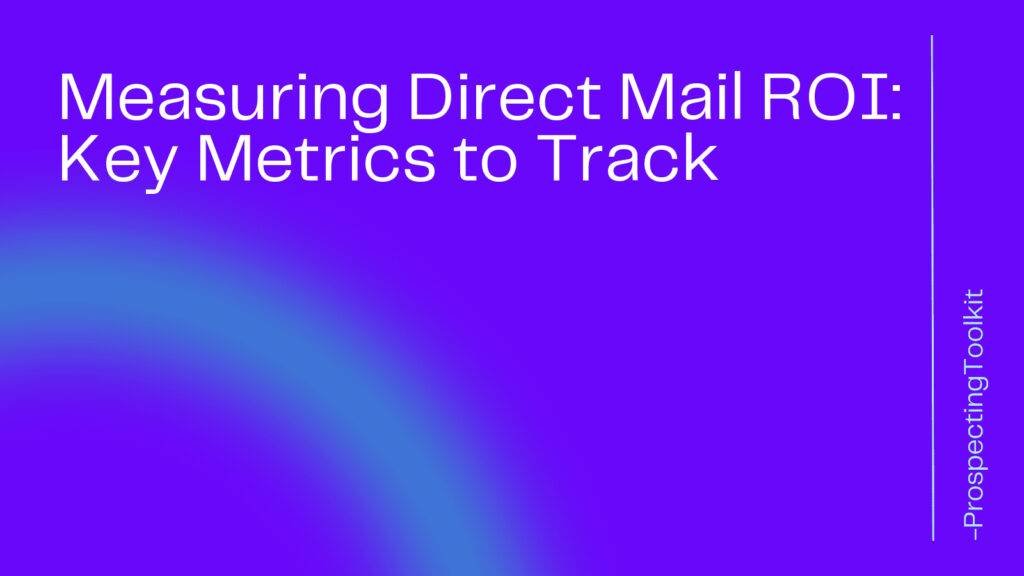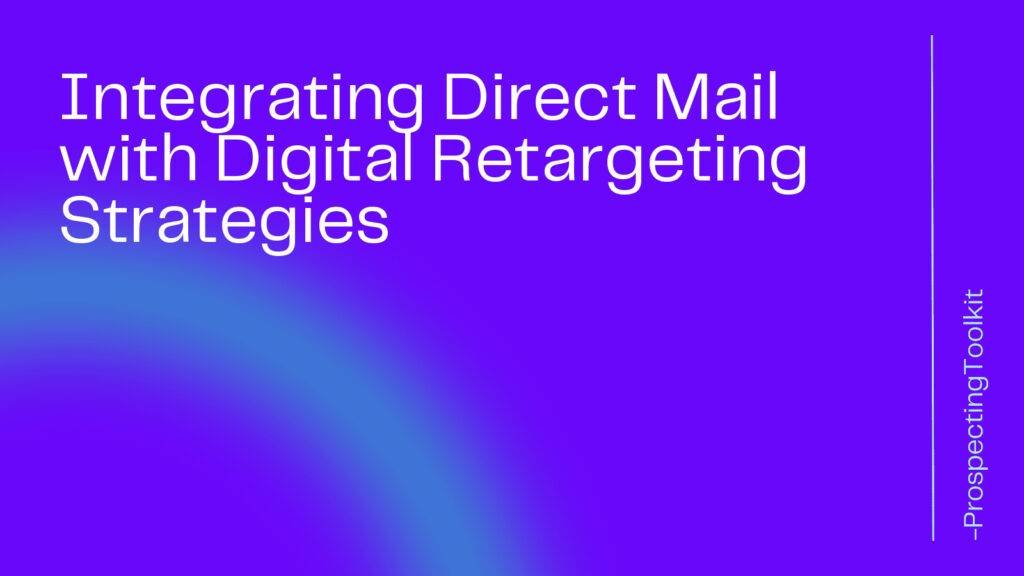In the ever-evolving landscape of digital marketing, businesses are constantly seeking innovative strategies to reach and engage their target audience.
One such strategy that has gained significant traction in recent years is Account Based Marketing (ABM). ABM is a highly targeted approach that focuses on individual accounts rather than broad market segments.
By tailoring marketing efforts to specific accounts, businesses can create personalized experiences that drive higher conversion rates and foster stronger customer relationships.
In this comprehensive guide, we will explore the concept of Account Based Marketing and delve into various strategies that can help businesses unlock the power of personalization. From identifying target accounts to crafting personalized content, we will provide actionable insights to supercharge your ABM efforts.
So, let’s dive in!
Table of Contents
ToggleUnderstanding Account Based Marketing
What is Account Based Marketing?
Account Based Marketing (ABM) is a strategic approach that focuses on targeting specific accounts or companies rather than casting a wide net to reach a broad audience.
It involves tailoring marketing efforts to suit the needs and preferences of individual accounts, treating them as markets of one.
ABM aims to create personalized experiences that resonate with the target accounts, ultimately driving higher conversion rates and revenue growth.
Benefits of Account Based Marketing
- Improved ROI: By focusing resources on high-value accounts, ABM allows businesses to maximize their return on investment. Since the marketing efforts are personalized and targeted, the chances of conversion and revenue generation increase significantly.
- Enhanced Customer Relationships: ABM enables businesses to build stronger relationships with their target accounts by delivering personalized experiences. By understanding the unique pain points and challenges of each account, businesses can provide tailored solutions and establish themselves as trusted partners.
- Better Sales and Marketing Alignment: ABM encourages close collaboration between sales and marketing teams. By aligning their efforts and working towards common goals, businesses can streamline their processes and improve overall efficiency.
- Increased Customer Lifetime Value: By focusing on personalized experiences and building strong relationships, ABM helps increase customer loyalty and retention. Satisfied customers are more likely to become repeat buyers and advocates for the brand.
Key Components of Account Based Marketing
- Identifying Target Accounts: The first step in ABM is identifying the target accounts that align with your business objectives. This involves conducting thorough research and analysis to identify accounts that have the highest potential for conversion.
- Building Account Personas: Once the target accounts are identified, it is essential to develop detailed account personas. This involves understanding the key decision-makers, pain points, and motivations of each account to create personalized marketing messages.
- Aligning Sales and Marketing Teams: Successful ABM requires close collaboration between sales and marketing teams. Both teams must work together to develop account-specific strategies and ensure seamless communication throughout the customer journey.
- Crafting Personalized Content: Personalization is at the core of ABM. Businesses must create tailored content that speaks directly to the needs and challenges of each account. This can include personalized emails, website content, and targeted advertising campaigns.
- Leveraging Technology and Data: ABM relies heavily on technology and data to execute personalized campaigns effectively. Utilizing customer relationship management (CRM) systems, marketing automation tools, and data analytics can provide valuable insights into account behavior and preferences, enabling businesses to deliver highly targeted and relevant content.
Developing an Account Based Marketing Strategy
Identifying Target Accounts
The success of an ABM strategy hinges on identifying the right target accounts.
To do this, businesses must conduct thorough research and analysis to identify accounts that align with their ideal customer profile. This involves considering factors such as industry, company size, revenue, and geographic location.
By focusing on accounts that have the highest potential for conversion, businesses can allocate their resources effectively and maximize their ROI.
Building Account Personas
Once the target accounts are identified, it is crucial to develop detailed account personas.
Account personas provide a deep understanding of the key decision-makers within the account, their pain points, motivations, and preferred communication channels.
By creating personalized marketing messages that resonate with each persona, businesses can establish a strong connection and increase the chances of conversion.
Aligning Sales and Marketing Teams
Successful ABM requires close collaboration between sales and marketing teams. Both teams must align their efforts and work towards common goals.
This involves regular communication, sharing of insights and data, and joint planning and execution of account-specific strategies.
By breaking down silos and fostering a collaborative environment, businesses can ensure a seamless customer experience and maximize the impact of their ABM efforts.
Crafting Personalized Content
Personalization is the key to effective ABM.
Businesses must create tailored content that speaks directly to the needs and challenges of each account.
This can include personalized emails (and cold emails), website content, case studies, and targeted advertising campaigns.
By delivering relevant and valuable content, businesses can establish themselves as trusted advisors and increase the chances of conversion.
Leveraging Technology and Data
Technology plays a crucial role in executing a successful ABM strategy.
Businesses should leverage customer relationship management (CRM) systems, marketing automation tools, and data analytics to gather insights and track the behavior of target accounts.
This data can help businesses understand the effectiveness of their campaigns, identify areas for improvement, and make data-driven decisions to optimize their ABM efforts.
Implementing Account Based Marketing Tactics
Account Research and Intelligence
Thorough account research and intelligence are essential for effective ABM. Businesses should gather information about the target accounts, including their industry trends, challenges, and recent news.
This information can be used to tailor marketing messages and create personalized content that addresses the specific needs of each account.
Personalized Email Campaigns
Email marketing is a powerful tool for ABM.
Businesses can create personalized email campaigns that speak directly to the pain points and challenges of each account.
By segmenting the email list based on account personas, businesses can deliver highly targeted and relevant content that resonates with the recipients.
Social Media Engagement
Social media platforms provide an opportunity to engage with target accounts on a more personal level.
Businesses can use social media to share relevant content, participate in industry discussions, and interact with key decision-makers within the target accounts.
By building relationships and establishing thought leadership, businesses can increase their visibility and credibility among their target audience.
Account-Based Advertising
Account-based advertising allows businesses to deliver personalized ads to specific target accounts.
By leveraging data and technology, businesses can create highly targeted ad campaigns that reach the decision-makers within the target accounts.
This increases the chances of capturing their attention and driving them towards conversion.
Events and Webinars
Hosting events and webinars specifically for target accounts can be an effective ABM tactic.
By providing valuable and educational content, businesses can position themselves as industry leaders and establish a strong connection with the target accounts.
These events also provide an opportunity for networking and building relationships with key decision-makers.
Measuring and Optimizing Account Based Marketing
Key Metrics to Track
To measure the success of an ABM strategy, businesses should track key metrics that align with their goals. Some common metrics to consider include:
- Account Engagement: Measure the level of engagement and interaction from target accounts, such as website visits, content downloads, and email open rates.
- Conversion Rate: Track the percentage of target accounts that convert into customers or take the desired action.
- Revenue Generated: Measure the revenue generated from target accounts to assess the ROI of the ABM efforts.
- Customer Lifetime Value: Track the value of customers acquired through ABM over their lifetime to understand the long-term impact of the strategy.
Analyzing and Interpreting Data
Data analysis is crucial for optimizing an ABM strategy. By analyzing the data collected from various touchpoints, businesses can gain insights into the effectiveness of their campaigns and identify areas for improvement.
This analysis can help businesses refine their messaging, adjust their targeting, and optimize their overall ABM strategy.
Continuous Improvement and Optimization
ABM is an iterative process that requires continuous improvement and optimization. Businesses should regularly review and analyze the performance of their ABM campaigns.
By identifying what works and what doesn’t, businesses can make data-driven decisions to optimize their strategies.
This may involve tweaking messaging, adjusting targeting criteria, or exploring new tactics to enhance engagement and conversion rates.
It is important to note that ABM is not a one-size-fits-all approach.
Each business will have unique goals, target accounts, and resources. Therefore, it is crucial to continuously evaluate and adapt the ABM strategy to align with changing market dynamics and customer needs.
Example Account Based Marketing Plan for XYZ Digital Services
1. Identify Target Accounts:
- Create a list of high-value clients based on criteria such as industry, company size, revenue, and strategic fit.
- Prioritize accounts based on their potential impact on the agency’s growth and profitability.
2. Understand Client Needs:
- Conduct thorough research on each target account to understand their pain points, goals, and challenges.
- Analyze their digital presence, current strategies, and competitor landscape.
3. Develop Personalized Content:
- Create highly relevant and personalized content tailored to each target account’s specific needs.
- Craft case studies, whitepapers, and industry-specific insights that showcase the agency’s expertise and the value it can bring to the client.
4. Leverage Multiple Channels:
- Implement a multi-channel approach that combines email marketing, social media, and targeted advertising.
- Use LinkedIn for account-specific outreach, sharing valuable content, and engaging with key decision-makers.
5. Customized Campaigns:
- Design targeted campaigns for each account, addressing their unique challenges and opportunities.
- Utilize retargeting ads to stay top-of-mind and reinforce the agency’s value proposition.
6. Personalized Outreach:
- Develop a personalized outreach strategy, including direct contact from account managers and executives.
- Schedule personalized demos, workshops, or webinars to showcase the agency’s capabilities and how they align with the client’s needs.
7. Networking and Events:
- Attend industry-specific events and conferences where target accounts are likely to be present.
- Host exclusive events or webinars tailored to the interests of the target accounts.
8. Metrics and Analytics:
- Set clear KPIs for each target account, such as engagement rates, conversion rates, and pipeline growth.
- Regularly analyze and adjust the strategy based on performance metrics.
9. Nurture Relationships:
- Establish a long-term relationship with key decision-makers and stakeholders.
- Provide ongoing support and insights even after the initial sale to solidify the agency’s position as a trusted partner.
10. Feedback and Iteration:
- Gather feedback from the target accounts to continuously improve the agency’s services and offerings.
- Iterate the ABM strategy based on the insights gained and evolving client needs.
By implementing this comprehensive ABM plan, XYZ Digital Services can foster deeper connections with high-value clients, maximize the impact of their marketing efforts, and position themselves as a strategic partner in the digital landscape.
Frequently Asked Questions (FAQ)
What is the difference between ABM and traditional marketing?
Traditional marketing focuses on reaching a broad audience through mass advertising and communication channels. It aims to attract as many potential customers as possible. In contrast, ABM is a highly targeted approach that focuses on individual accounts. It tailors marketing efforts to specific accounts, treating them as markets of one. ABM aims to create personalized experiences that resonate with the target accounts, ultimately driving higher conversion rates and fostering stronger customer relationships.
How do I identify the right target accounts for ABM?
Identifying the right target accounts for ABM requires thorough research and analysis. Start by defining your ideal customer profile based on factors such as industry, company size, revenue, and geographic location. Then, use data and market intelligence to identify accounts that align with this profile and have the highest potential for conversion. Consider factors such as their pain points, challenges, and alignment with your product or service offering.
What role does personalization play in ABM?
Personalization is at the core of ABM. It involves tailoring marketing messages and content to suit the needs and preferences of individual accounts. By understanding the unique pain points and challenges of each account, businesses can provide tailored solutions and establish themselves as trusted partners. Personalization helps create a deeper connection with the target accounts, increasing the chances of conversion and fostering long-term customer relationships.
How can I align my sales and marketing teams for ABM success?
Aligning sales and marketing teams is crucial for ABM success. Start by fostering open communication and collaboration between the teams. Encourage regular meetings and joint planning sessions to develop account-specific strategies. Share insights and data to ensure both teams have a comprehensive understanding of the target accounts. Establish clear goals and metrics to measure success and incentivize collaboration between the teams. By working together towards common objectives, sales and marketing teams can maximize the impact of their ABM efforts.
What technologies can I leverage for effective ABM?
Technology plays a vital role in executing effective ABM strategies. Some key technologies to consider include:
- Customer Relationship Management (CRM) Systems: CRM systems help manage and track interactions with target accounts. They provide valuable insights into account behavior and preferences, enabling businesses to deliver highly targeted and relevant content.
- Marketing Automation Tools: Marketing automation tools streamline and automate marketing processes, allowing businesses to deliver personalized content at scale. These tools help nurture leads, track engagement, and measure the effectiveness of campaigns.
- Data Analytics: Data analytics tools provide insights into the performance of ABM campaigns. They help businesses analyze and interpret data, identify trends, and make data-driven decisions to optimize their strategies.
- Account-Based Advertising Platforms: Account-based advertising platforms allow businesses to deliver personalized ads to specific target accounts. These platforms leverage data and technology to create highly targeted ad campaigns that reach decision-makers within the target accounts.
By leveraging these technologies, businesses can enhance their ABM efforts, improve efficiency, and drive better results.
Conclusion
Account Based Marketing is a powerful strategy that enables businesses to create personalized experiences and build stronger relationships with their target accounts.
By focusing on individual accounts and tailoring marketing efforts to their specific needs, businesses can drive higher conversion rates, enhance customer relationships, and maximize their return on investment.
In this guide, we have explored the concept of Account Based Marketing, discussed various strategies and tactics to implement, and provided insights on measuring and optimizing ABM campaigns.
Remember, ABM is an iterative process that requires continuous improvement and adaptation.
By staying informed, leveraging technology, and aligning sales and marketing teams, businesses can unlock the power of personalization and achieve success with their ABM strategies.







